
Key Findings
Singing with others feels good –– and for good reason. This seemingly simple activity has a network of complex social, emotional, physiological and biological processes underpinning it.
KEY FINDINGS
Group singing participants report a powerful, immediate effect on social connectedness, leading to efficient bonding within large groups. This effect continued to accumulate over two months of participation in choir and beyond.
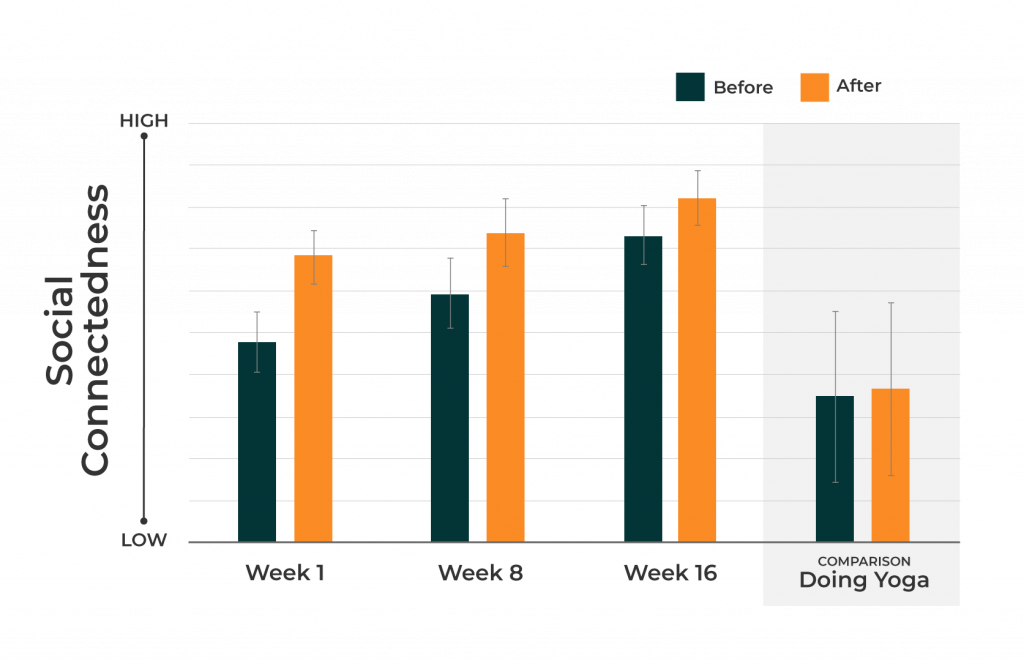
Group singing has been shown to produce elevated levels of oxytocin, a hormone related to social bonding that is also associated with reduced loneliness.
Other observed benefits arise from the social aspect of group singing — coming together and celebrating the group and human connection through music. For example, group singing has a rapid effect on participants’ self-assessed feelings of connectedness and closeness with others in new choirs –– an effect that continues to accrue over long-term participation. Notably, ongoing participation in group singing appears to cultivate stronger feelings of social connectedness compared to ongoing participation in other group activities.
Group singing has also been shown to increase pro-sociality (behaviours intended to benefit others). Moving and expressing together, especially in song, has the psychological effect of softening boundaries between individuals. It can create feelings of social belonging and community and, at the same time, break down barriers between groups. Singing songs from cultures other than your own, for instance, can build understanding and empathy. Studies have linked group singing to increased cooperation and willingness to share resources with others. In fact, some theorists claim that one evolutionary purpose of group singing is to foster group cohesion and cooperation. The community building and new relationships that form through group singing can be powerful sources of mutual aid and peer-to-peer support for marginalized communities.
Within specific cultural groups, group singing can also be a powerful way for members to develop connection with traditions, culture and community.
Saliva samples from choir participants contained oxytocin — the bonding hormone. So far, we are finding that only group singing increases levels of oxytocin. We did not find this effect in private singing.
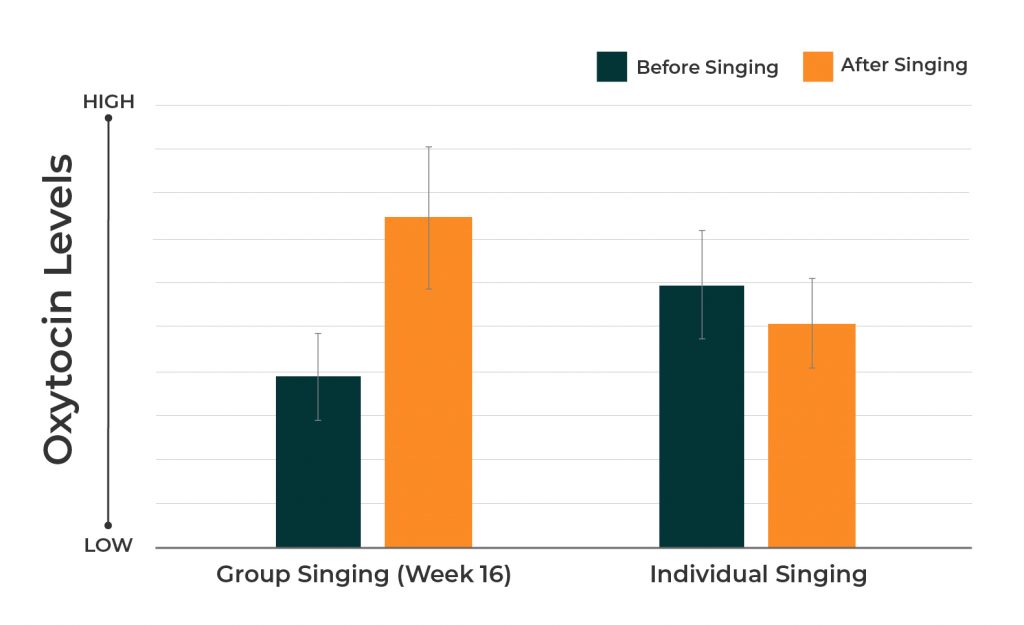
Overall, group singing led to a positive shift on self-reported mood. This effect became particularly noticeable after two months of group singing.
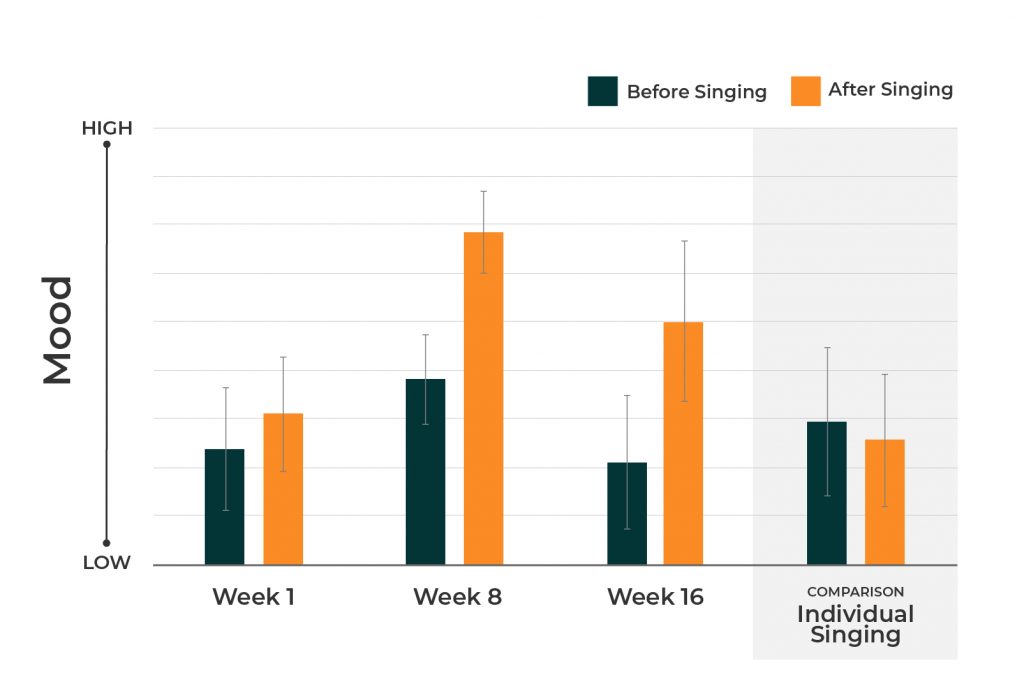
Research has found that singing can be an especially powerful tool for managing emotions and putting us in a better mood. And that effect is even stronger when singing in a group.
One of several reasons singing can help improve mood is due to its effectiveness as a stress-reliever. Not only do people report feeling more relaxed after a singing session, but research has shown that singing can actually decrease levels of salivary cortisol, a hormone best known as the stress hormone that plays an influential role in many mental and physical health challenges.
In addition to boosting mood and reducing stress, singing has been shown to contribute more generally to psychological wellbeing and personal development –– including increased feelings of competence, self-esteem, and confidence.
Group singing has been associated with a number of other measurable effects on the brain and body that boost wellbeing. Increased oxytocin is associated with reduced anxiety, while decreased cortisol is associated with improved cognition and immune system function. These same changes in oxytocin and cortisol have both been linked to pain reduction, and studies have shown that people have a higher pain threshold after singing with others. Research has also found that singing regulates blood pressure, increases oxygenation in the blood, triggers the immune system, and promotes healthy lung function. More generally, music has been shown to activate and connect different regions of the brain, including those involved in memory, thinking, movement, attention, language, and emotion.
Saliva samples from choir participants showed a reduction in cortisol — the stress hormone. This suggests that singing in general may reduce stress.
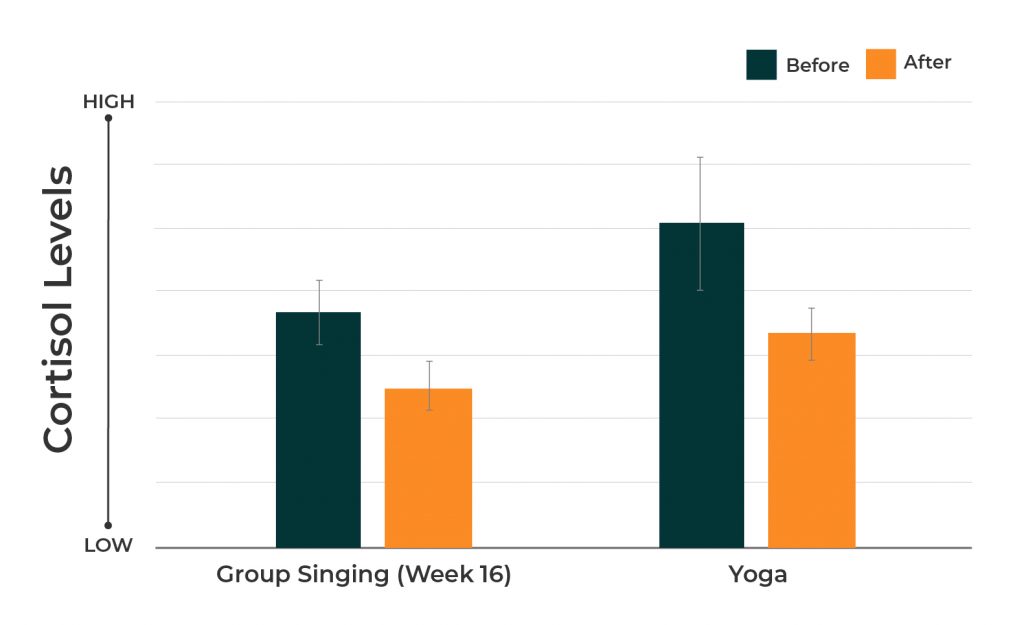
Group singing elicited a positive effect on pain threshold. This effect was also accrued over long-term participation in choir. Groups that had been singing together for a long time demonstrated overall higher levels of pain thresholds.
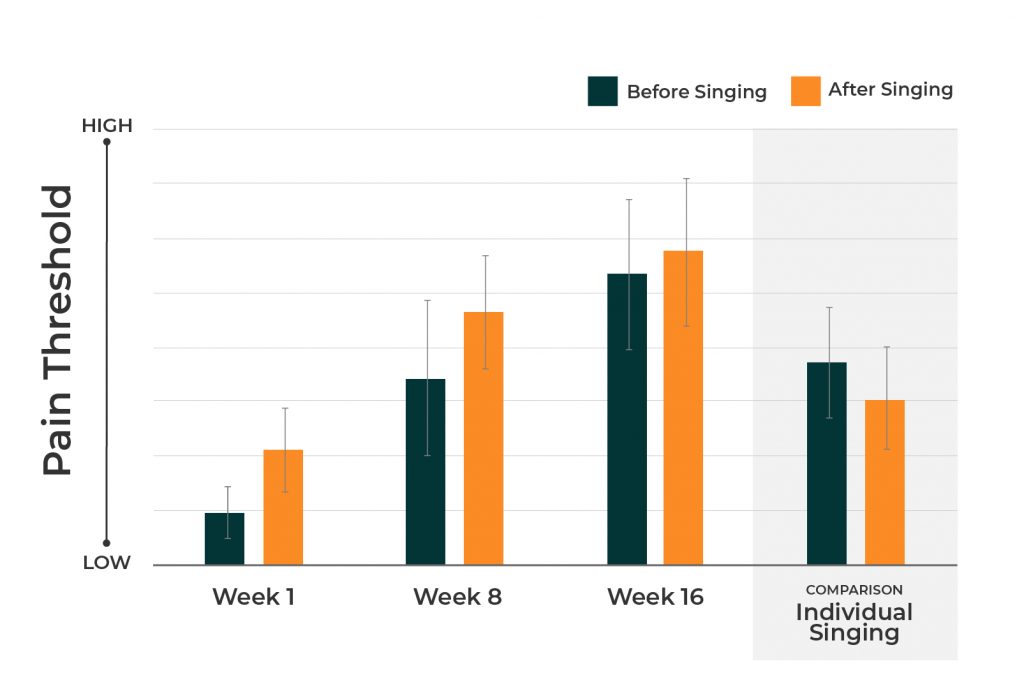
Communication function
Group singing can improve both productive (e.g. speech) and receptive (e.g. listening and comprehension) aspects of communication among people with communication challenges. It can promote fluent speech for individuals who stutter, enhance vocal quality and strength among people with aphasia and Parkinson’s disease, improve respiratory control and communication for individuals with lung disease, and support listening skills for individuals with hearing loss.
Summary of communication outcomes
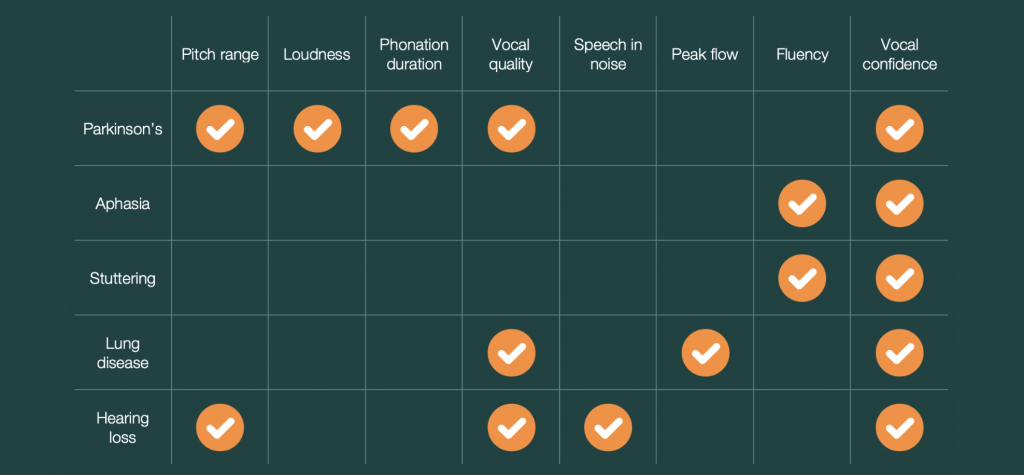
Social Wellbeing